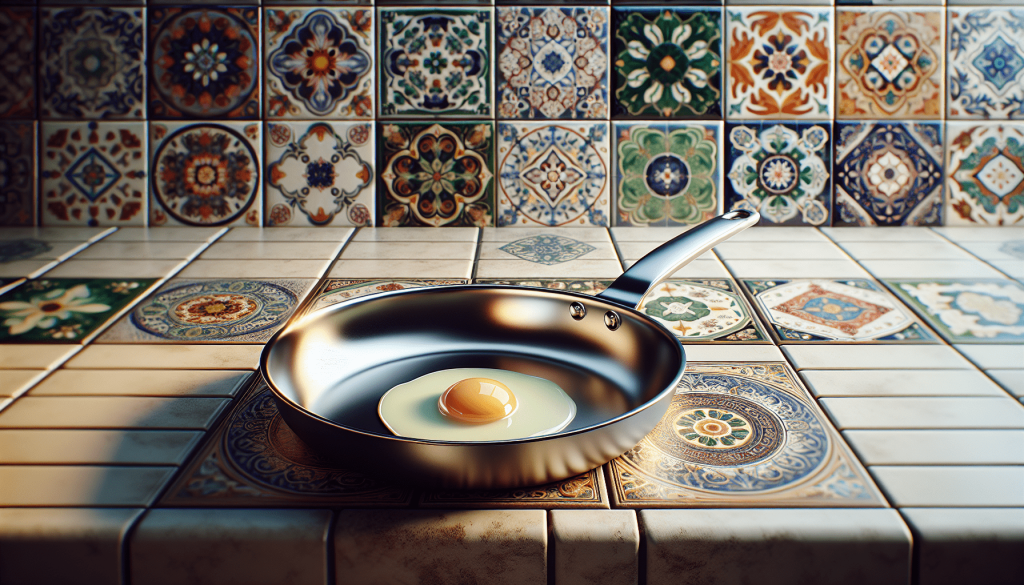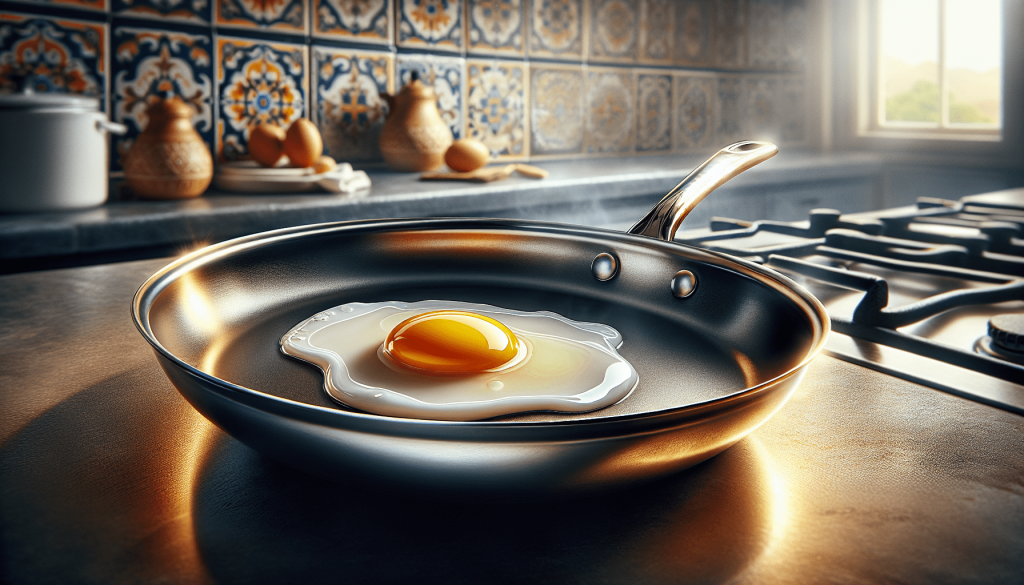Cooking is a delightful art, and the right choice of cookware can make all the difference in your culinary adventures. In the world of kitchen equipment, two popular options stand out: nonstick and stainless steel. Each has its own unique benefits and characteristics, making it difficult to decide which one is best for you. Whether you enjoy flipping pancakes effortlessly or savor the joy of searing a steak to perfection, this article aims to empower you with all the information you need to make an informed decision about the perfect cookware for your kitchen.

Durability
Nonstick cookware:
Nonstick cookware is generally not as durable as stainless steel cookware. The nonstick coating can wear off over time, especially if metal utensils are used, resulting in decreased performance. However, with proper care and maintenance, nonstick cookware can last for several years.
Stainless steel cookware:
Stainless steel cookware is known for its exceptional durability. It is resistant to scratches, dents, and corrosion, making it a long-lasting option for your kitchen. Even with regular use and cleaning, stainless steel cookware can maintain its quality and appearance for many years to come.
Heat Distribution
Nonstick cookware:
Nonstick cookware often provides even heat distribution, thanks to the nonstick coating. This coating helps to distribute heat evenly across the surface of the cookware, ensuring your food cooks consistently. However, it’s essential to note that the quality of heat distribution can vary between different nonstick cookware brands and models.
Stainless steel cookware:
Stainless steel cookware is known for its excellent heat conduction properties. It distributes heat evenly throughout the entire pan, ensuring that your food is cooked uniformly. Additionally, stainless steel can withstand high temperatures, making it suitable for various cooking methods, including searing and browning.
Stickiness
Nonstick cookware:
One of the most significant advantages of nonstick cookware is its ability to prevent food from sticking to the surface. The nonstick coating helps to create a barrier between the food and the pan, making it easier to flip, slide, or remove your food without any fuss.
Stainless steel cookware:
Stainless steel cookware is not inherently nonstick, so food may stick to the surface if not properly managed. However, with the right techniques and preheating, you can create a natural nonstick surface by allowing the pan to become hot enough before adding your ingredients.
Versatility
Nonstick cookware:
Nonstick cookware is incredibly versatile, especially when it comes to cooking delicate items like eggs, pancakes, and fish. Its nonstick properties make it easier to cook these delicate foods without worrying about them sticking or breaking apart. However, it may not be suitable for high-heat cooking techniques or the use of metal utensils.
Stainless steel cookware:
Stainless steel cookware offers great versatility in the kitchen. It can be used for a wide range of cooking techniques, including boiling, sautéing, frying, and even oven roasting. Its durability and ability to withstand high temperatures make it ideal for searing meats and achieving a golden crust.

Cooking Techniques
Nonstick cookware:
Nonstick cookware is best suited for low to medium heat cooking techniques, such as sautéing vegetables, making omelettes, or stir-frying. It is not recommended for high-heat cooking methods, such as searing or deep-frying, as excessive heat can damage the nonstick coating.
Stainless steel cookware:
Stainless steel cookware is versatile enough to handle a wide range of cooking techniques. It can be used for anything from simmering sauces to searing steaks. Its ability to distribute heat evenly makes it suitable for achieving the perfect sear and even cooking.
Maintenance
Nonstick cookware:
Nonstick cookware requires special care to maintain its nonstick properties and extend its lifespan. It is vital to avoid using metal utensils that can scratch the nonstick coating. Instead, opt for silicone, plastic, or wooden utensils. Additionally, it’s recommended to hand wash nonstick cookware to prevent damage from harsh detergents or dishwasher cycles.
Stainless steel cookware:
Stainless steel cookware is relatively low maintenance. It is dishwasher safe and can withstand the use of metal utensils without scratching. However, it’s important to note that stainless steel cookware may require more effort when cleaning stubborn food residues, and using non-abrasive cleaners is recommended.
Longevity
Nonstick cookware:
Nonstick cookware generally has a shorter lifespan compared to stainless steel cookware. The nonstick coating can degrade over time, especially with heavy use and improper care. However, with careful maintenance and avoiding the use of metal utensils, nonstick cookware can last for several years.
Stainless steel cookware:
Stainless steel cookware is known for its durability and long lifespan. With proper care, it can last a lifetime, making it a worthwhile investment. Its resistance to scratches, dents, and corrosion ensures that you won’t have to replace your stainless steel cookware frequently.
Health Concerns
Nonstick cookware:
There have been concerns about the potential health risks associated with nonstick cookware. When heated to high temperatures, nonstick coatings can release toxic fumes that can be harmful if inhaled. However, modern nonstick cookware has undergone improvements to reduce these risks, and using nonstick cookware at moderate heat levels can mitigate any potential hazards.
Stainless steel cookware:
Stainless steel cookware is considered a safe option for cooking. It does not release any harmful chemicals or react with food, even when exposed to high temperatures. Stainless steel is a non-reactive material, ensuring that your food remains safe and free from any unwanted flavors.
Price
Nonstick cookware:
Nonstick cookware is generally more affordable than stainless steel cookware. There is a wide range of nonstick cookware available at various price points, making it accessible to those on a budget. However, it’s essential to consider the overall quality and durability of the nonstick coating when making your purchase.
Stainless steel cookware:
Stainless steel cookware tends to be more expensive compared to nonstick cookware. The higher price is often reflective of its durability, versatility, and longevity. Investing in higher-quality stainless steel cookware can provide you with a long-lasting and reliable option for your kitchen.
Aesthetics
Nonstick cookware:
Nonstick cookware typically features a smooth, glossy finish that can be visually appealing. It often comes in a variety of vibrant colors, allowing you to add a pop of personality to your kitchen decor. The sleek appearance of nonstick cookware can make it an attractive addition to your culinary space.
Stainless steel cookware:
Stainless steel cookware has a classic and timeless aesthetic. Its polished finish gives it an elegant and professional look that can complement any kitchen style. Stainless steel cookware’s sleek design can add a touch of sophistication to your cooking space.
In conclusion, both nonstick and stainless steel cookware offer unique advantages and considerations. Nonstick cookware excels in stickiness prevention and cooking delicate foods, while stainless steel cookware shines with its durability, versatility, and overall longevity. Your choice ultimately depends on your cooking preferences, budget, and desired aesthetic. Consider weighing the pros and cons of each type and choose the cookware that best fits your needs and style. Happy cooking!
